The business aviation industry has been talking about Automatic Dependent Surveillance-Broadcast (ADS-B) for the last decade, and the January 1, 2020, mandate deadline is coming fast. It is now time for aircraft owners and operators who want to avoid inconvenient circumstances to finalize their ADS-B compliance plans.
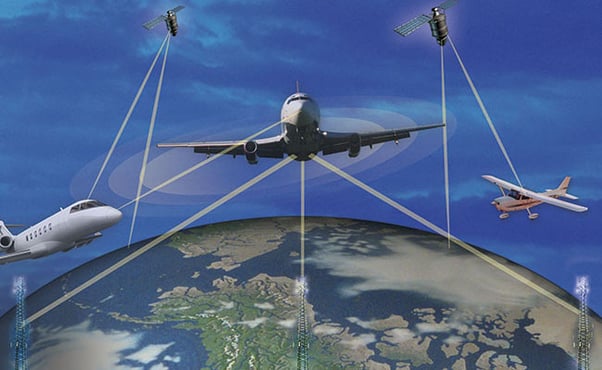
What is ADS-B?
In May 2010, the FAA published its final rule mandating ADS-B Out, with the goal of making crowded skies safer and more efficient. ADS-B is a relatively new technology that provides Air Traffic Control (ATC) with precise, three-dimensional position data. Pilots in equipped aircraft have access to air traffic and weather services that provide a new level of safety, better situational awareness and more efficient routing.
ADS-B transmissions include position, altitude, velocity, aircraft identification and other information and are more accurate than ground-based radar.
The ADS-B Out mandate requires all aircraft operating in the US airspace to have a certified GPS position source paired with a transponder capable of transmitting data from the aircraft without prompting from the pilot or a request from ATC.
What If I Miss The Deadline?
If your aircraft is not ADS-B compliant by January 1, 2020, it will, unless you plan to fly below 10,000 feet and avoid Class A, B and C airspace, be grounded.
Post-mandate, and on a case-by-case basis, ATC may give permission to relocate the aircraft in order to have it modified for compliance with the mandate. You’ll then be notified that the aircraft is grounded until it complies.
The Myths of ADS-B
We are seeing an interesting industry trend. Nearly 9,000 business aircraft need ADS-B. Roughly one-third of them are in compliance. So 6,000 more need to upgrade. With the deadline roughly 34 months away, more than 175 aircraft will need to be upgraded each month. Yet many operators are waiting. Those who continue to wait will face scheduling pressure and higher installation costs. Yet many unfortunately believe several myths currently circulating.
Those in the industry need only think back to 2005 and the RVSM mandate. Capable avionics installation facilities were at capacity 24 months before the mandate and for a full 12 months AFTER the mandate. ADS-B installations are similar to RVSM (Reduced Vertical Separation Mimimum) installs in complexity and downtime. Make no mistake. There simply isn’t enough capacity in the industry to complete the number of modifications required. There will be aircraft sitting and waiting for modification after January 1, 2020.
I feel confident in telling customers that the deadline will not be extended. FAA Administrator Michael Huerta and other FAA and industry leaders have consistently gone on record several times saying the mandate deadline will not change.
Installation shops and aircraft manufacturers have collaborated, and owners now enjoy a wide array of choices and price points for equipping to meet the mandate. I am sure that with supply and demand for equipment and labor, prices will only increase as the mandate deadline moves closer.
For most models, the preowned business aircraft market is still very buyer-oriented. If you don’t upgrade to ADS-B before the sale, the price you will be able to ask for your aircraft will be significantly less than if it had ADS-B.
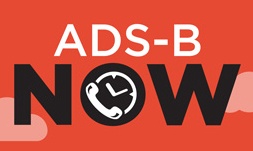 Be Informed
Be Informed
I feel that we, as leaders in the business aviation community, have a responsibility to inform and provide a solution we are capable of providing. I don’t share this information to scare operators; but I remember the RVSM days well. We fielded lots of calls from owners who wanted immediate input, and I was unable to help. I want to make sure owners and operators understand the risks they take by not having an ADS-B compliance plan--now.
As originally appeared in the March/April 2017 issue of Business Aviation Advisor
 Go to FAA Website: https://adsbperformance.faa.gov/PAPRRequest.aspx and request a PAPR (Public ADS-B Performance Report). A PAPR provides an additional method of verifying proper operation of ADS-B equipment.
Go to FAA Website: https://adsbperformance.faa.gov/PAPRRequest.aspx and request a PAPR (Public ADS-B Performance Report). A PAPR provides an additional method of verifying proper operation of ADS-B equipment.

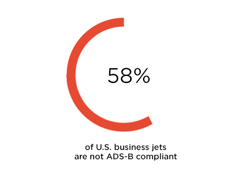 It’s important to get the upgrade done at a qualified facility. Counting installations performed before 2017, Duncan Aviation has completed more than 520 ADS-B installations to date, and has capacity for another 1500 by the mandate deadline. We consider our organization to be the foremost ADS-B compliance experts across all aircraft makes and models.
It’s important to get the upgrade done at a qualified facility. Counting installations performed before 2017, Duncan Aviation has completed more than 520 ADS-B installations to date, and has capacity for another 1500 by the mandate deadline. We consider our organization to be the foremost ADS-B compliance experts across all aircraft makes and models.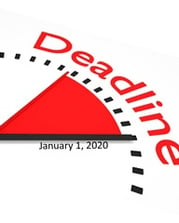 We’ve been repeating this message for several years: Upgrade now, please don’t wait until the last minute; the deadline isn’t going to change, and parts and labor prices are not going to drop. We really want to reiterate that there are no magic bullets on the horizon for your ADS-B upgrade. The OEMs have spent millions of dollars developing solutions for their platforms, and they aren’t going to develop anything with a lower cost or that’s easier to install in the final months before the deadline. In fact, most vendors have already announced price increases for this year and next.
We’ve been repeating this message for several years: Upgrade now, please don’t wait until the last minute; the deadline isn’t going to change, and parts and labor prices are not going to drop. We really want to reiterate that there are no magic bullets on the horizon for your ADS-B upgrade. The OEMs have spent millions of dollars developing solutions for their platforms, and they aren’t going to develop anything with a lower cost or that’s easier to install in the final months before the deadline. In fact, most vendors have already announced price increases for this year and next.
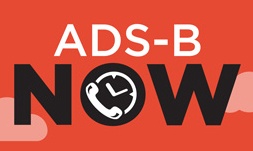 For several years now, Duncan Aviation has been encouraging its customers to upgrade to ADS-B (Automatic Dependent Surveillance-Broadcast). We’re aware that as the FAA’s ADS-B mandate deadline—January 1, 2020—draws nearer, there will be a critical shortage of hangar space at qualified shops, not to mention a shortage of skilled avionics technicians who can perform and install the upgrades.
For several years now, Duncan Aviation has been encouraging its customers to upgrade to ADS-B (Automatic Dependent Surveillance-Broadcast). We’re aware that as the FAA’s ADS-B mandate deadline—January 1, 2020—draws nearer, there will be a critical shortage of hangar space at qualified shops, not to mention a shortage of skilled avionics technicians who can perform and install the upgrades.


 Doug says unequivocally that the value of an aircraft right now is directly related to whether it has ADS-B.
Doug says unequivocally that the value of an aircraft right now is directly related to whether it has ADS-B. Duncan Aviation estimates that roughly 6,000 of the business jets in its core customer base still need ADS-B. That paints a pretty urgent picture of the industry. However, when you consider that ADS-B affects ALL aircraft, it's an even more dramatic picture. The number of U.S.-based turbine aircraft that still need ADS-B is closer to 11,000 and the number of all U.S. aircraft that still need ADS-B is closer to 74,000.
Duncan Aviation estimates that roughly 6,000 of the business jets in its core customer base still need ADS-B. That paints a pretty urgent picture of the industry. However, when you consider that ADS-B affects ALL aircraft, it's an even more dramatic picture. The number of U.S.-based turbine aircraft that still need ADS-B is closer to 11,000 and the number of all U.S. aircraft that still need ADS-B is closer to 74,000.
 Be Informed
Be Informed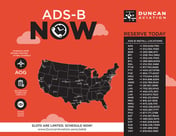

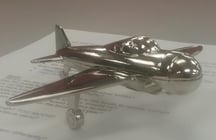
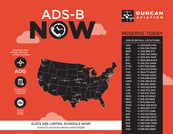 If you are not yet ready for the required upgrades and are worried about finding available capacity at certified service centers, take a look at our ADS-B Slot Program
If you are not yet ready for the required upgrades and are worried about finding available capacity at certified service centers, take a look at our ADS-B Slot Program